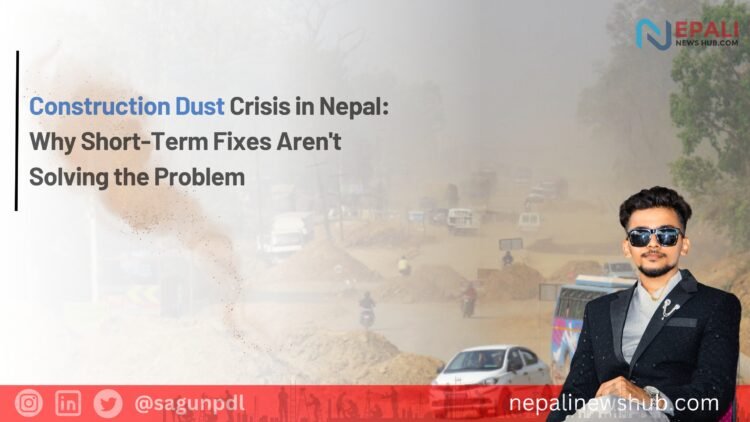Construction dust pollution has emerged as a critical problem in Nepal, although it has been largely neglected in the government’s policies that rarely address the issues leading to air pollution. Due to rapid urbanization, extensive road works, and additional structures being put in place, dust pollution is very much on the rise, however, the measures taken by the government are more often than not superficial and reactive with few enduring effects.
In particular, the Kathmandu Valley experiences high levels of pollution through particulate matter, PM2.5, which at times exceeds the acceptable levels by 10-30 times. As research shows, the construction industry is one of the greatest contributors of about 30% of the PM2.5 pollution in the valley, where projects such as the Ring Road expansion also heavily contribute to dust and vehicle emissions. Away from Kathmandu, the Butwal-Narayanghat road, which is a modification of the transportation system to help ease movement, worsens the situation as sweeping dust is expelled creating sizeable clouds that spread over the adjoining areas.
Tremendous amounts of resources are solely directed towards temporary measures such as sporadic street watering or simply suspending classes to curb disease outbreaks, this is still inadequate. The only purpose of excessive watering on the streets is dust suppression which is a very short-lived remedy. In the absence of strict laws, advanced sites of dust control technologies, and more order in building sites, the cities of Nepal remain troubled with one of the worst air from all the South-Asian cities, including Nepal itself.
There are interventions of international agencies like USAID’s Clean Air initiative, which support local NGOs in cleaner technologies and emission standards and improving public awareness programs; but there is a limit to their success in the absence of more government support. The National Clean Air Action Plan outlines the objective of achieving a 50% reduction in pollution by 2025 yet within the existing levels of government oversight and commitment, experts are doubtful this aim will be achieved.





